In the ever-evolving world of digital marketing, email remains a cornerstone of customer engagement and brand communication. As businesses seek to optimize their email marketing strategies, the choice of platform becomes crucial. Two popular contenders in this space are Mailchimp and VerticalResponse, each offering unique features and capabilities to help businesses connect with their audience effectively.
Additionally, innovative platforms like Prism Reach are emerging, pushing the boundaries of personalized email marketing. This comprehensive comparison delves into the strengths, limitations, and unique offerings of Mailchimp and VerticalResponse, integrating hidden gem strategies and exploring how Prism Reach can further enhance your email marketing efforts.
Key Facts
- Mailchimp offers a more extensive feature set, including advanced automation and a free plan for up to 2,000 contacts.
- VerticalResponse provides a simpler interface and is known for its responsive, personalized customer support.
- Both platforms offer A/B testing, but Mailchimp’s capabilities are more advanced, allowing testing of up to three variables.
Unveiling the Power Players: Mailchimp vs VerticalResponse
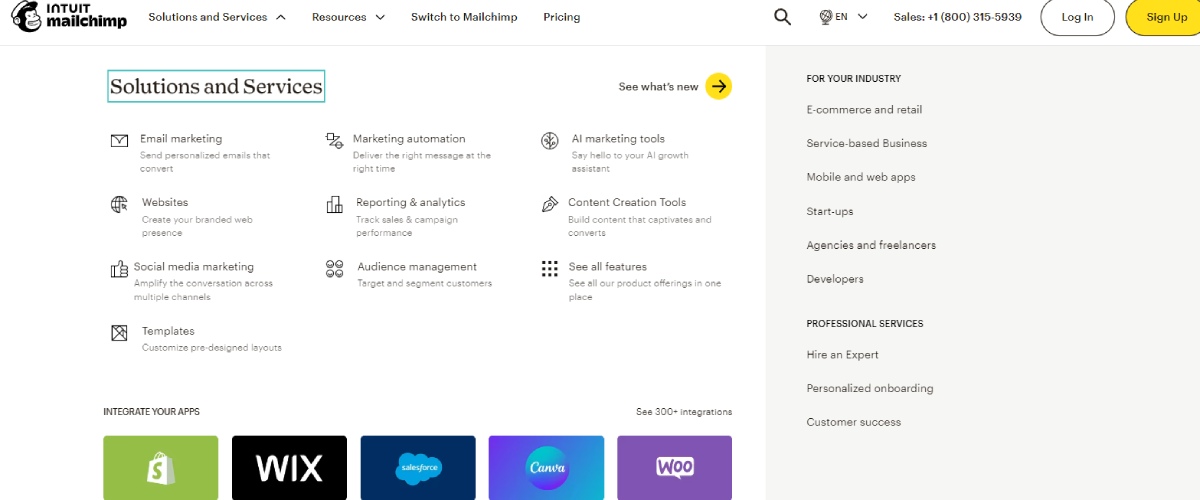
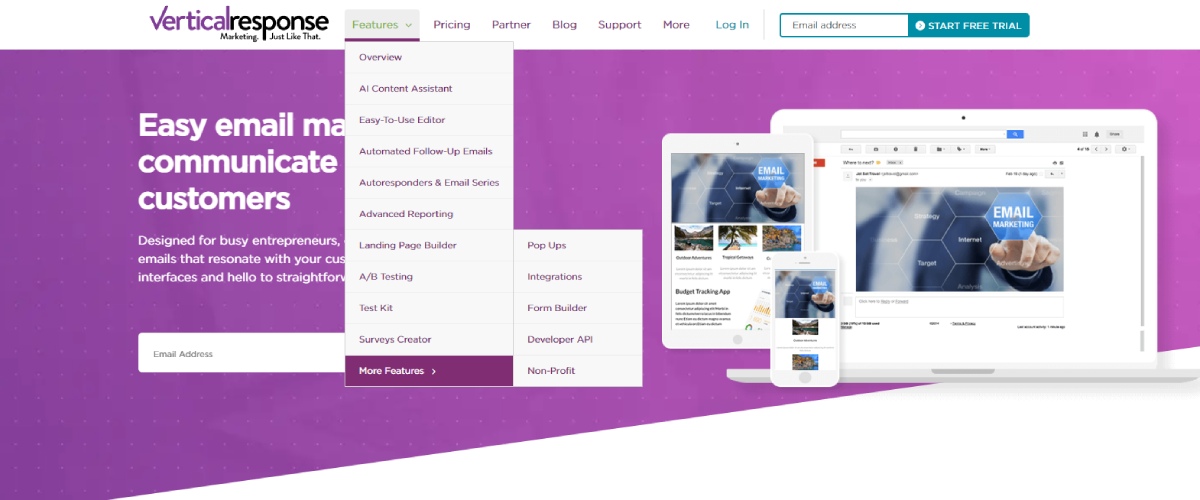
Platform Overview and Target Audience
Mailchimp and VerticalResponse represent two distinct approaches to email marketing software. Mailchimp is renowned for its user-friendly interface and comprehensive feature set, making it a go-to choice for businesses of all sizes. Its robust platform caters to a wide range of needs, from small startups to large enterprises. In contrast, VerticalResponse positions itself as a more straightforward, budget-friendly option, making it particularly appealing to small businesses and organizations with simpler email marketing requirements.
This distinction in their target audiences is reflected in their feature offerings, pricing structures, and overall user experience. While Mailchimp aims to provide a one-size-fits-all solution with room for growth, VerticalResponse focuses on delivering essential features in a more accessible package for those with basic needs or limited resources.
Feature-Rich Mailchimp: A Comprehensive Solution
Mailchimp’s strengths lie in its extensive automation capabilities, rich template library, and advanced analytics. The platform offers over 100 customizable templates, catering to a wide range of design preferences and industry needs. Its multi-step customer journey mapping feature allows businesses to create complex, branching customer journeys based on user behavior, enabling highly targeted and personalized communication strategies.
Additionally, Mailchimp’s advanced segmentation capabilities allow for real-time syncing and behavioral targeting. This means you can create highly personalized campaigns based on user interactions, significantly improving open and click-through rates.
VerticalResponse: Simplicity and Support at the Forefront
VerticalResponse, while offering fewer templates (8 in total), compensates with full customization options and a simpler learning curve. This approach caters to businesses that prefer a more straightforward, less overwhelming interface for their email marketing needs. The platform’s paid plans start at $16/month, slightly higher than Mailchimp’s $9.99/month entry point, but unlock features like A/B testing for subject lines.
This testing capability, although more limited compared to Mailchimp’s advanced options, provides essential functionality for optimizing email performance. VerticalResponse’s strength lies in its straightforward approach and dedicated support, making it an appealing choice for businesses that prioritize simplicity and direct assistance. The platform’s focus on personalized customer support creates a unique value proposition for users who appreciate hands-on guidance in their email marketing efforts.
Integration Capabilities: Connecting Your Marketing Ecosystem
When it comes to integrations, Mailchimp takes the lead with its extensive ecosystem, connecting seamlessly with popular e-commerce platforms like Shopify and WooCommerce. This wide range of integrations allows businesses to create a cohesive marketing stack, syncing data across various tools and platforms. Mailchimp’s API access further enhances its flexibility, enabling custom integrations for businesses with specific needs.
In contrast, VerticalResponse offers fewer integrations overall but works well with CRM tools, catering to businesses focused on customer relationship management. While more limited in scope, VerticalResponse’s integrations are strategically chosen to support core business functions, particularly in the realm of customer data management and lead nurturing. Both platforms offer Google Analytics integration, allowing users to sync campaign data with their website analytics for a more comprehensive view of marketing performance.
Analytics and Reporting: Measuring Campaign Success
When it comes to analytics and reporting, Mailchimp offers more comprehensive insights, including comparative reports and detailed campaign analytics. The platform’s ability to generate in-depth reports on emails, social posts, and landing pages provides a holistic view of marketing performance across channels.
VerticalResponse provides basic tracking for opens, clicks, and bounces, which may be sufficient for businesses with simpler reporting needs. While less extensive than Mailchimp’s offerings, VerticalResponse’s analytics suite covers the essential metrics needed to gauge email campaign effectiveness. Both platforms offer mobile-friendly reporting, allowing users to monitor campaign performance on-the-go, an essential feature in today’s fast-paced business environment.
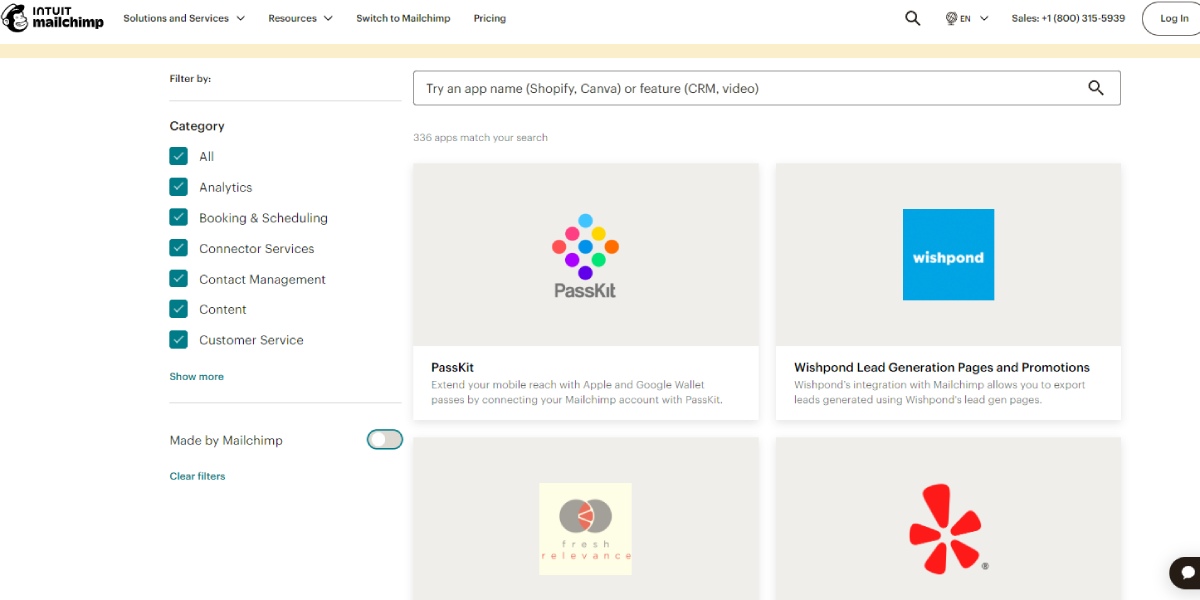
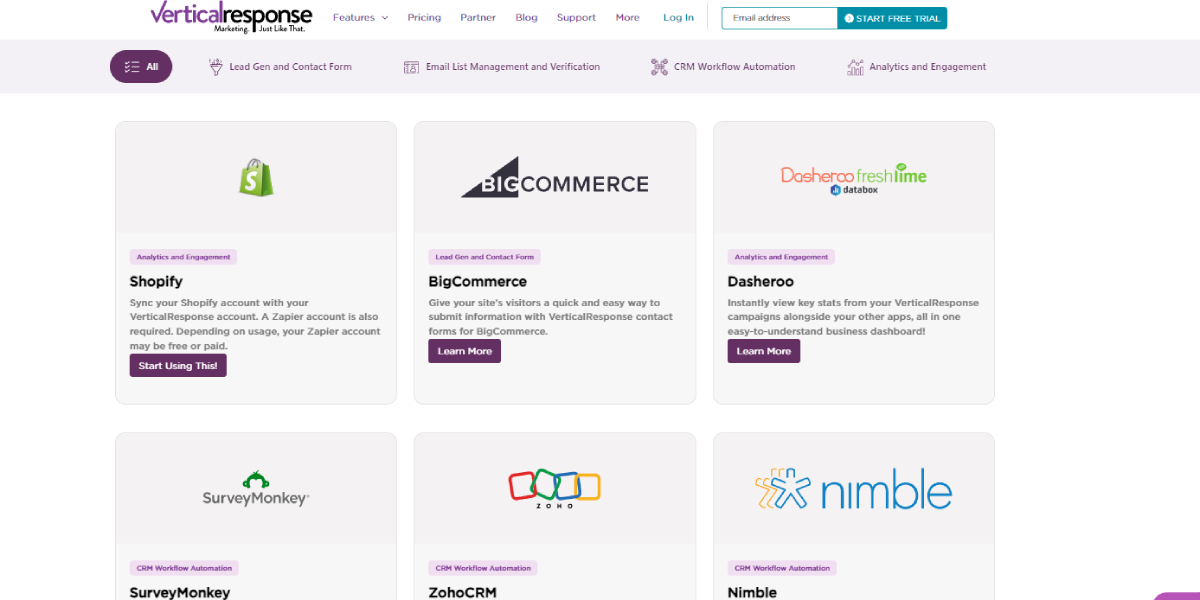
Hidden Gem Strategies for Mailchimp vs VerticalResponse
Beyond the core features, both Mailchimp and VerticalResponse offer unique strategies that can significantly enhance your email marketing efforts. Here are five hidden gem strategies that leverage the unique features of both platforms:
1. Utilize VerticalResponse’s Date Added Filter
VerticalResponse’s Date Added Filter allows users to segment contacts based on when they were added to the list. By targeting newer subscribers with specific campaigns, businesses can tailor their messaging and increase engagement rates. This strategy is often overlooked but can significantly enhance campaign relevance.
2. Leverage Mailchimp’s Customer Journeys for Advanced Automation
Many users are unaware of the full potential of Mailchimp’s Customer Journeys feature. By mapping out customer interactions and automating responses based on behavior (like website visits or email opens), businesses can create highly personalized experiences that drive conversions. This advanced automation tool enables marketers to nurture leads effectively through the sales funnel.
3. Implement Google Analytics Tracking in VerticalResponse
Although not widely discussed, integrating Google Analytics with VerticalResponse can provide deeper insights into how email campaigns impact website traffic. This data can help refine marketing strategies by showing which emails lead to the most conversions, allowing for more informed decision-making and optimization of future campaigns.
4. Explore VerticalResponse’s Heat Map Reporting
VerticalResponse offers heat maps that show where recipients clicked within emails. This unique feature allows marketers to understand which content resonates most, enabling them to optimize future campaigns based on actual user behavior. By identifying hotspots in your emails, you can strategically place important links and calls to action to maximize engagement.
5. Use Custom Fields in VerticalResponse for Personalization
Many users overlook the power of custom fields in VerticalResponse. By collecting specific data points (like birthdays or interests), marketers can send highly personalized emails that improve engagement and customer loyalty. Custom fields allow for a deeper level of personalization, making each subscriber feel valued and understood.
6. Take Advantage of Mailchimp’s Pre-built Automation Templates
While many users create automation from scratch, Mailchimp offers pre-built templates for common scenarios (like welcome emails or re-engagement campaigns). Using these templates saves time and ensures best practices are followed, allowing marketers to implement effective automation quickly and efficiently.
7. Engage with VerticalResponse’s Community Support
VerticalResponse has a robust support community that provides valuable insights and tips from experienced users. Engaging with this community can uncover lesser-known strategies and solutions to common challenges, enhancing your email marketing efforts through shared knowledge and collective experience.
8. Utilize A/B Testing for Subject Lines in Both Platforms
While A/B testing is common knowledge, many users do not frequently test subject lines. Regularly experimenting with different subject lines can yield significant improvements in open rates, making it a simple yet effective strategy. Both Mailchimp and VerticalResponse offer A/B testing tools that can help identify the most effective subject lines for your audience.
9. Create Custom Opt-in Forms with VerticalResponse
VerticalResponse allows for customizable opt-in forms that can be integrated into websites and social media platforms. Using these forms strategically can enhance subscriber acquisition efforts by aligning them closely with branding and messaging, resulting in higher conversion rates and a more engaged subscriber base.
10. Monitor Engagement Metrics Closely in Mailchimp
Users often focus solely on open rates; however, monitoring engagement metrics like click-through rates and conversions provides a more comprehensive view of campaign effectiveness. This insight allows for timely adjustments to strategies that may not be performing as expected, ensuring continuous improvement and optimal campaign performance.
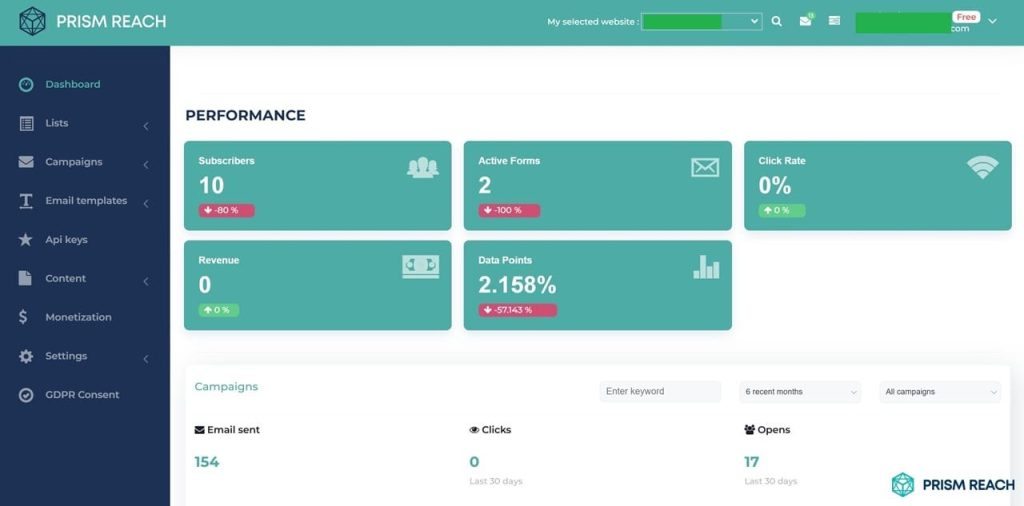
Innovative Solutions by Prism Reach
While Mailchimp and VerticalResponse offer solid email marketing solutions, innovative platforms like Prism Reach are pushing the boundaries of what’s possible in personalized email marketing. Prism Reach leverages advanced AI technology to offer deep personalization that goes beyond traditional segmentation methods.
Key Benefits of Prism Reach:
- Increased Engagement: Publishers report up to 40% higher engagement rates due to the personalized nature of the content.
- Higher Revenue: Tailored advertising and efficient content targeting lead to higher monetization rates for published newsletters.
- Improved Productivity: Automation and AI-driven insights significantly reduce the time required to create and manage campaigns.
Prism Reach’s core functionality revolves around its proprietary AI technology, which clusters website content and social media posts into relevant categories. This AI uses a variety of data points to create detailed user avatars, enabling personalized newsletter content that incorporates factors such as location, engagement history, and predicted interests. The system’s ability to analyze vast amounts of data allows for highly targeted marketing strategies.
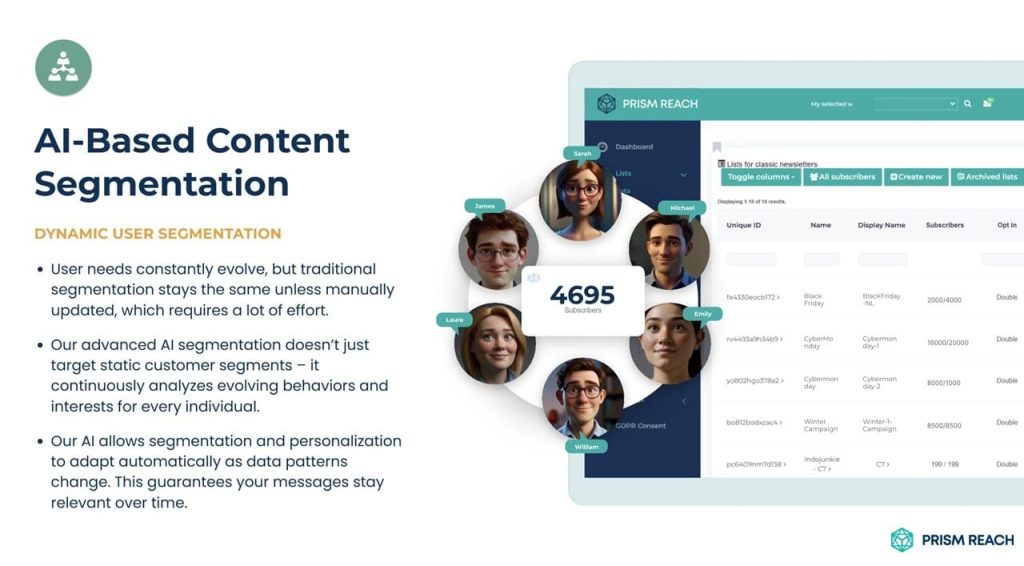
Innovative Features and Future Prospects
Prism Reach stands out with its AI-powered personalization capabilities. By transforming how publishers and content creators engage with their audiences, Prism Reach uses sophisticated AI algorithms to customize every aspect of newsletters based on subscriber behavior and preferences. This level of personalization not only enhances user experience but also drives better marketing outcomes.
Looking ahead, Prism Reach aims to expand its technology into the eCommerce sector and explore new ways to leverage AI for broader marketing applications. The company is committed to continuous improvement of its AI algorithms, ensuring that its solutions remain at the cutting edge of technology and marketing innovation.
Upgrade Your Email Marketing with AI Personalization!
Conclusion
In the Mailchimp vs Vertical Response comparison, Mailchimp emerges as the more feature-rich option, ideal for businesses seeking advanced automation and comprehensive analytics. Its extensive integration options, powerful automation capabilities, and robust analytics make it a versatile choice for a wide range of businesses.
VerticalResponse, with its simpler interface and dedicated support, caters well to businesses prioritizing ease of use and personalized assistance. Its user-friendly design and responsive customer support make it accessible to those just starting with email marketing or operating with limited resources.
However, as the email marketing landscape evolves, innovative solutions like Prism Reach highlight the potential for AI-driven personalization to revolutionize how businesses engage with their audiences through email. For those seeking cutting-edge personalization and efficiency in their email marketing efforts, exploring such AI-powered alternatives may offer significant advantages over traditional platforms.
Ultimately, the choice between Mailchimp, VerticalResponse, or newer alternatives like Prism Reach depends on your specific business needs, budget, and long-term marketing goals. By carefully considering the strengths and limitations of each platform, you can select the tool that best aligns with your email marketing strategy and helps you build stronger connections with your audience.